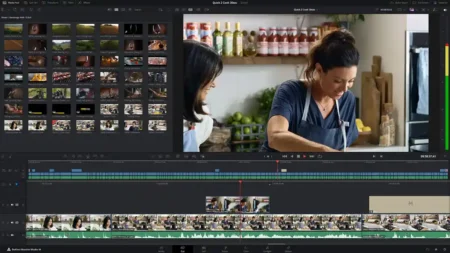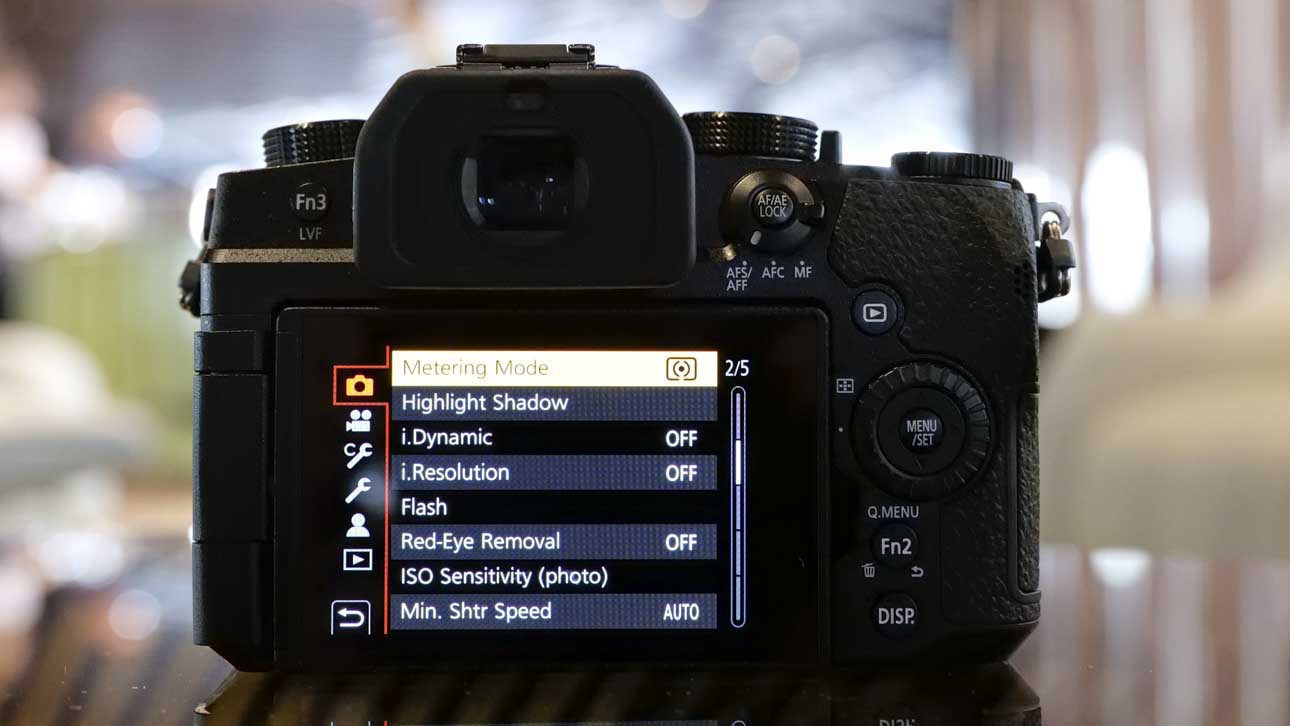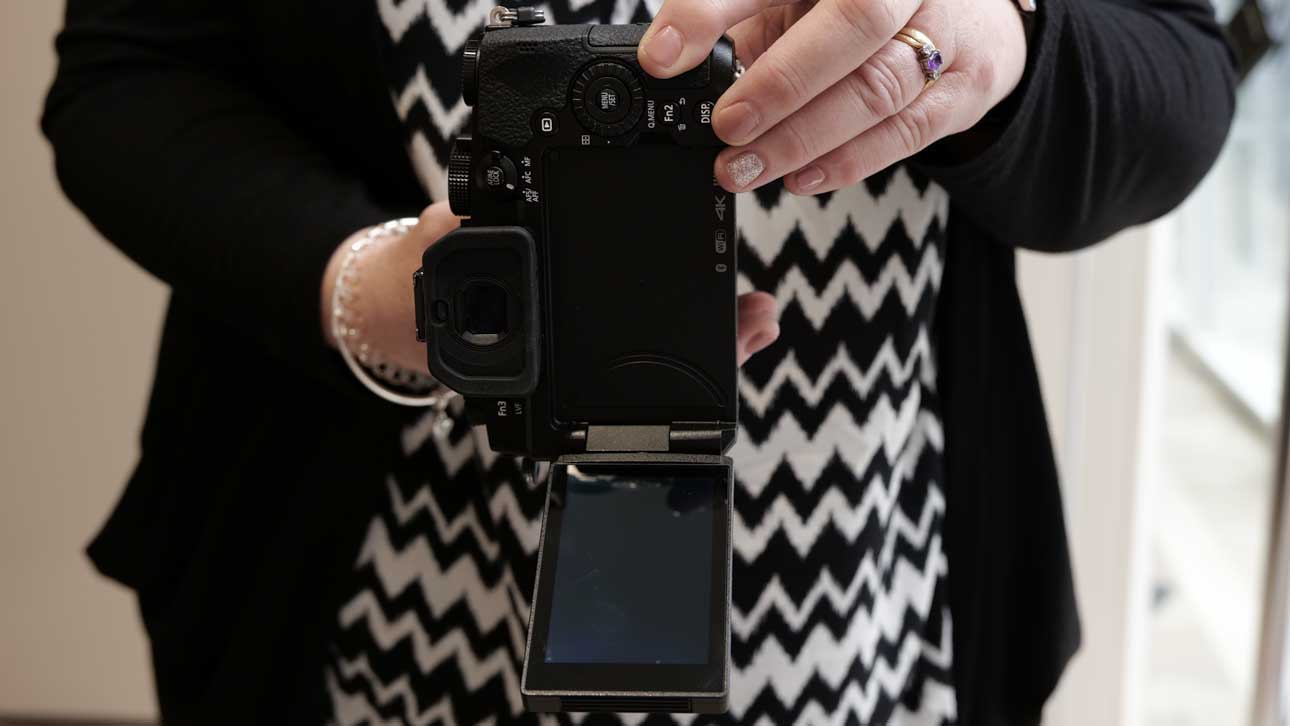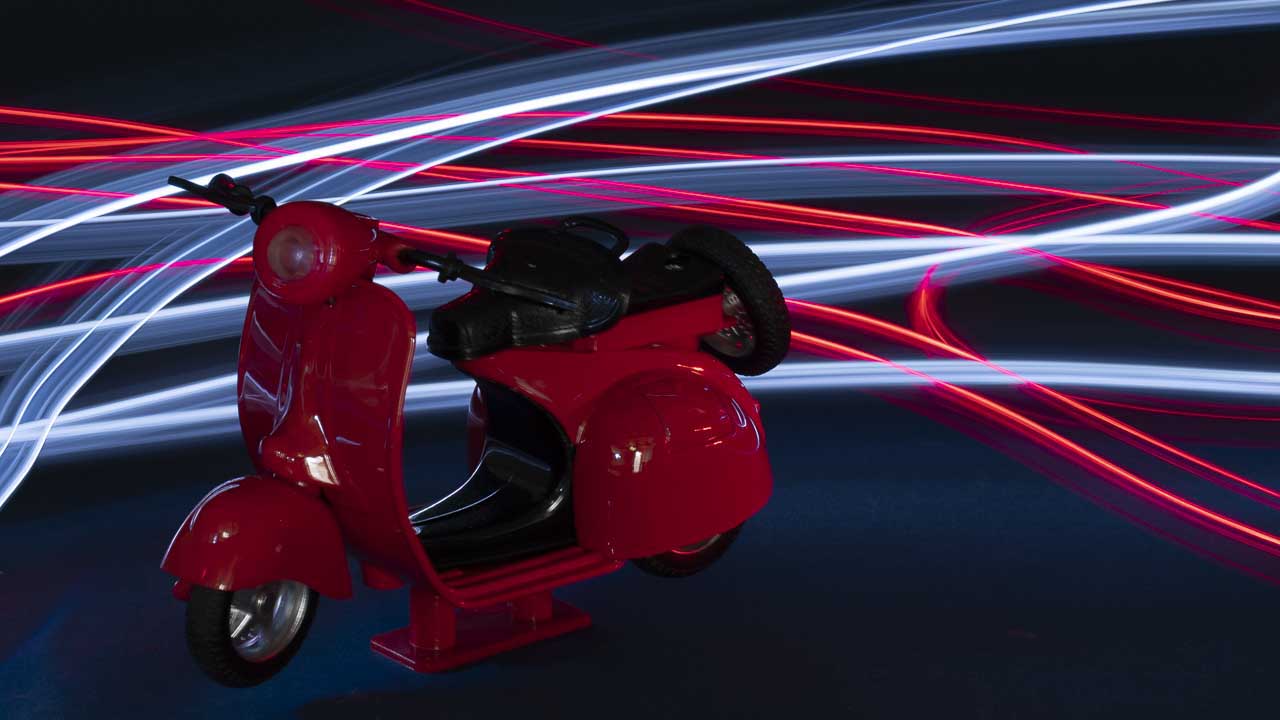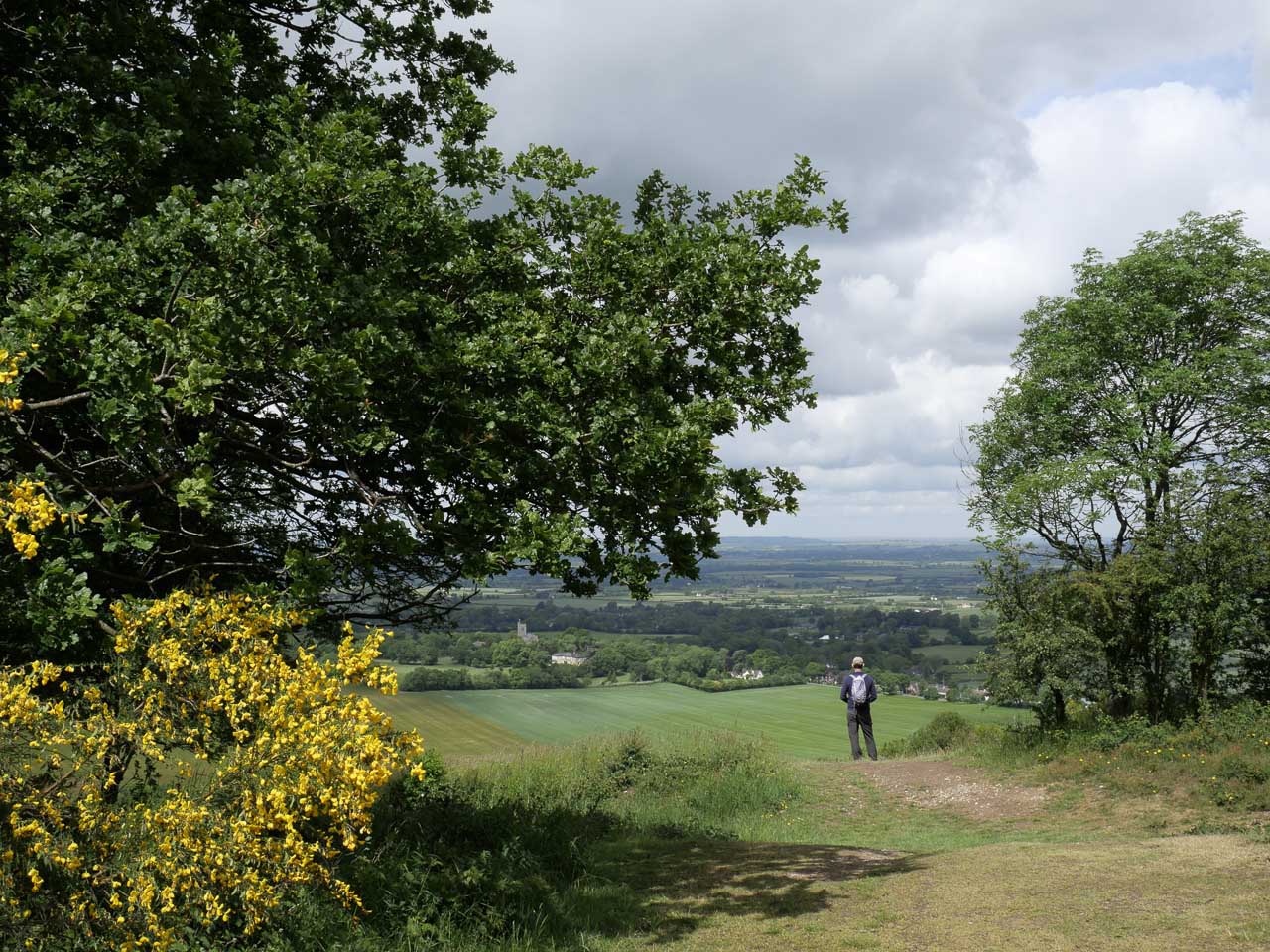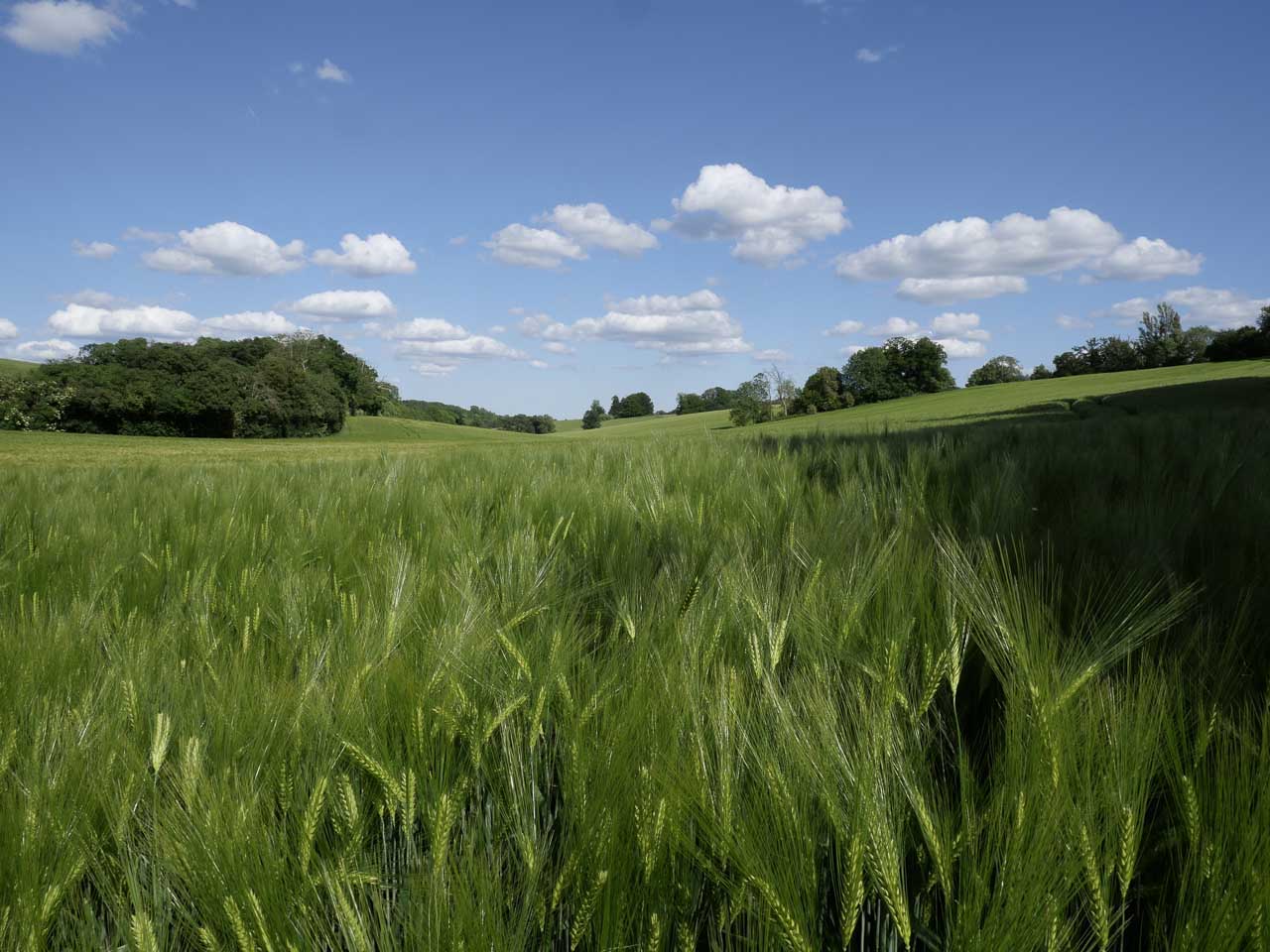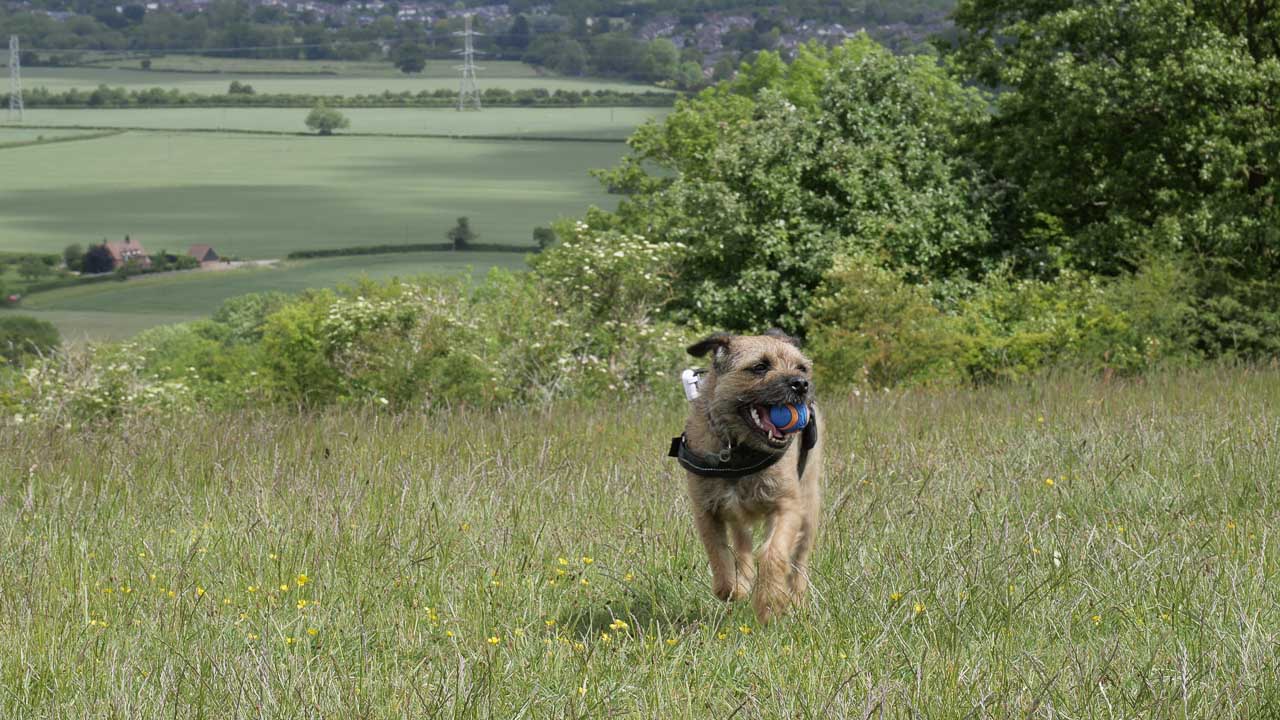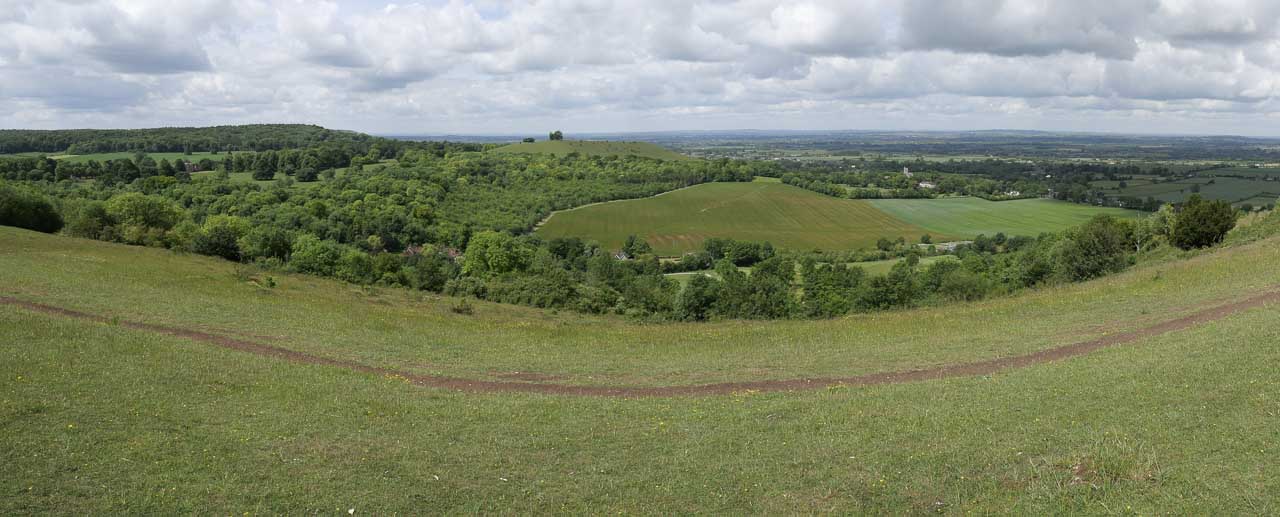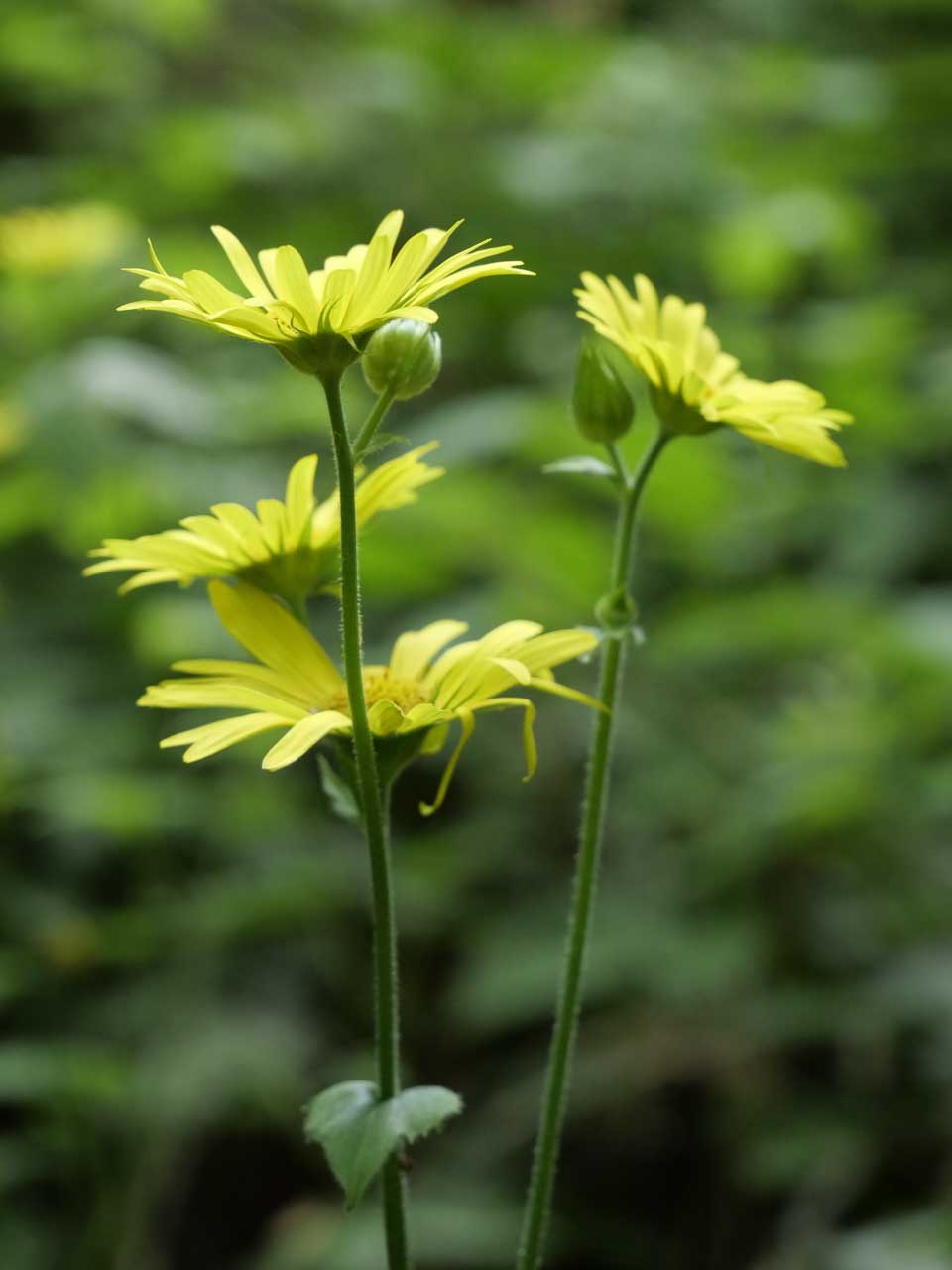Snap Verdict
The Panasonic G90, known as the Panasonic Lumix G95 and G91 in some territories, is a 20.3Mp DSLR-style mirrorless camera aimed at enthusiast photographers and videographers. It has some attractive features including a weather-sealed body, a 2.36million-dot OLED electronic viewfinder, a 3-inch 1.040-million-dot OLED vari-angle touch-screen and Panasonic’s 5-axis Dual IS II system to help produce blur-free images and smooth video.
It can also record unlimited 4K video (3840×2140) at up to 30p/25p and V-Log L is pre-installed to enable wider dynamic range to be captured. The inclusion of 3.5mm microphone and headphone jacks add to the appeal to videographers and vloggers.
I’m pretty excited about what the G90 has to offer. Not just because of the features, but also because its control layout is similar to the Panasonic G9’s above it in the line-up. The only disappointment is the jump in the price in comparison with the G80 at launch and the lack of a joystick on the back of the camera.
For
- 4K video (3840×2140) enables with V-Log L pre-installed
- Vari-angle touch screen
- Weatherproof
Against
- No joystick for setting the AF point
- Seems a bit expensive
- Sub-APS-C size sensor
Check the price of the Panasonic Lumix G90 at Wex Photo Video, Park Cameras and Amazon UK
Check the price of the Panasonic Lumix G95 at BH Photo Video, Adorama and Amazon US
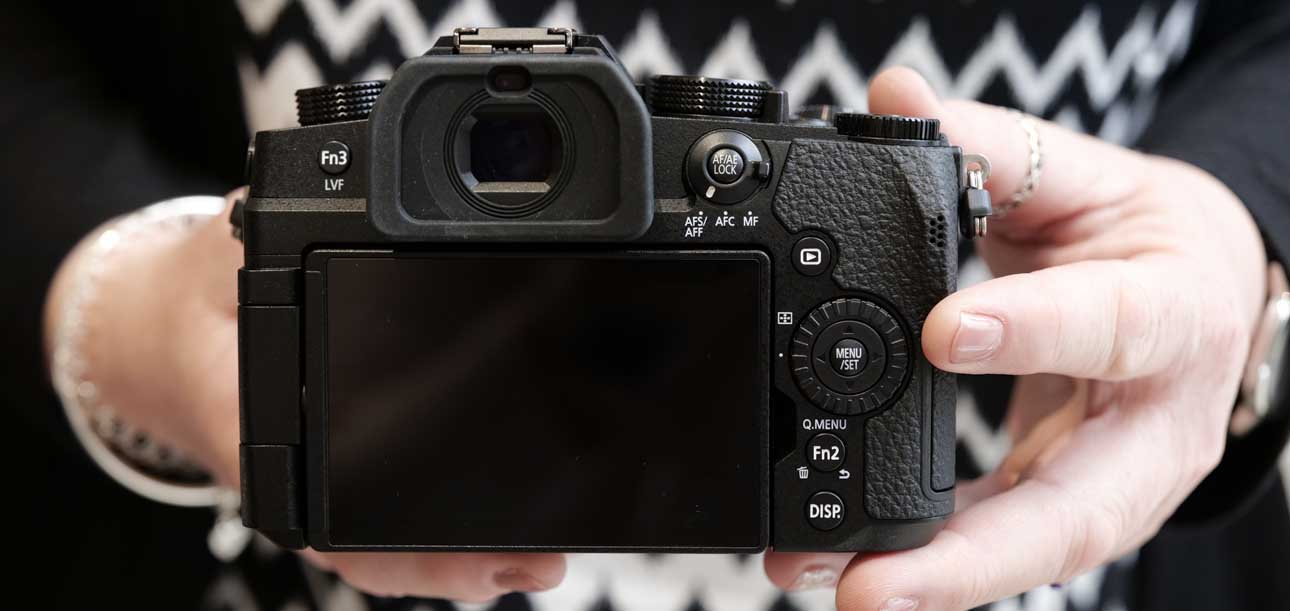
Features
The Panasonic Lumix G90, also called the Panasonic Lumix G95 and G91, sits just below the Panasonic G9 in the company’s mirrorless camera line-up. And although it has the same resolution (20.3million pixels), I’m told that the sensor is not the same as in Panasonic’s flagship stills camera.
However, like the G9, the G90’s sensor has no optical low-pass filter (OLPF). This helps to maximise the level of detail it can capture. The shutter is also an electromagnetic unit to minimise vibration and boost detail levels.
In addition, Panasonic’s latest 5-axis image stabilisation system, Dual IS II is on hand to minimise camera shake and stabilise video footage. It’s claimed to extend the safe hand-holdable shutter speed by up to 5 stops – that’s the difference between 1/125 sec and 1/4sec.
By default, the G90’s sensitivity range is ISO 200-25,600. This can be expanded to include ISO 100.
Screen and Viewfinder
Like the G80, which continues in the range, the G90 has a 2,360,000-dot OLED (Organic Light-Emitting Diode) viewfinder. This has a magnification ratio of approximately 1.48x / 0.74x (in 35mm terms) and gives 100% field of view.
And although at 1,040,000-dots the resolution of the 3-inch screen on the back of the G90 is the same as the one in the G80, it has been upgraded to an OLED unit.
As before, this screen is mounted on a vari-angle hinge to make it easier to see from a range of angles. That’s useful whether you shoot stills or video. I’m a fan of vari-angle screens.
When Touchpad AF mode is activated, the screen can be used to set the AF point while you look in the viewfinder.

Speed and Agility
As usual, Panasonic has stuck with contrast detection for the autofocus (AF) system. Its Depth From Defocus (DFD) technology is used to speed focusing and subject tracking. This and the processing engine enable the G90 to have a claimed focus acquisition time of just 0.07sec.
Despite the increase in the pixel count, Panasonic’s latest Venus Engine enables a maximum shooting rate of 9fps (frames per second) in AF-S mode. Switching to AF-C (continuous autofocusing) reduces the maximum rate to 6fps.
Face / Eye Detection AF is on hand to detect and focus human faces and eyes automatically. There’s also 1-Area AF and Pinpoint AF to allow you to target small subjects and Tracking AF for use with moving subjects. Alternatively, Custom Multi AF enables you to select groups of the 49 focus points to focus on your subject.
As usual, Focus Peaking is available to help with manual focusing if it’s required.
Video
Panasonic was quick to introduce 4K video technology to its cameras. Consequently, the G90/G95 can shoot 4K (3840 x 2160) video at 30/25/24p. Full HD (1920×1080) footage can also be shot at up to 120fps. However, if you want to retain full control over the exposure settings you’ll have to settle for a maximum of 60p/50p.
Interestingly, the recording is only limited by the capacity of the card. This may explain some of the price increase over the G80.
If you want to shoot at 120fps you have to use the High Speed Video mode. This that allows the G90 to record Full HD at 120fps, 90fps or 60fps for slow motion playback. This is option is found in the menu and not as part of the frame rate options. It’s also limited to Program exposure mode, which is a shame.
The big news for many videographers and vloggers, however, is that the G90 has V-Log L pre-installed. This enables footage to be recorded with up to 12 stops of dynamic range and gives greater scope for post-capture grading. The image below shows how dramatic the difference is between V-Log L and the Standard Photo Style.
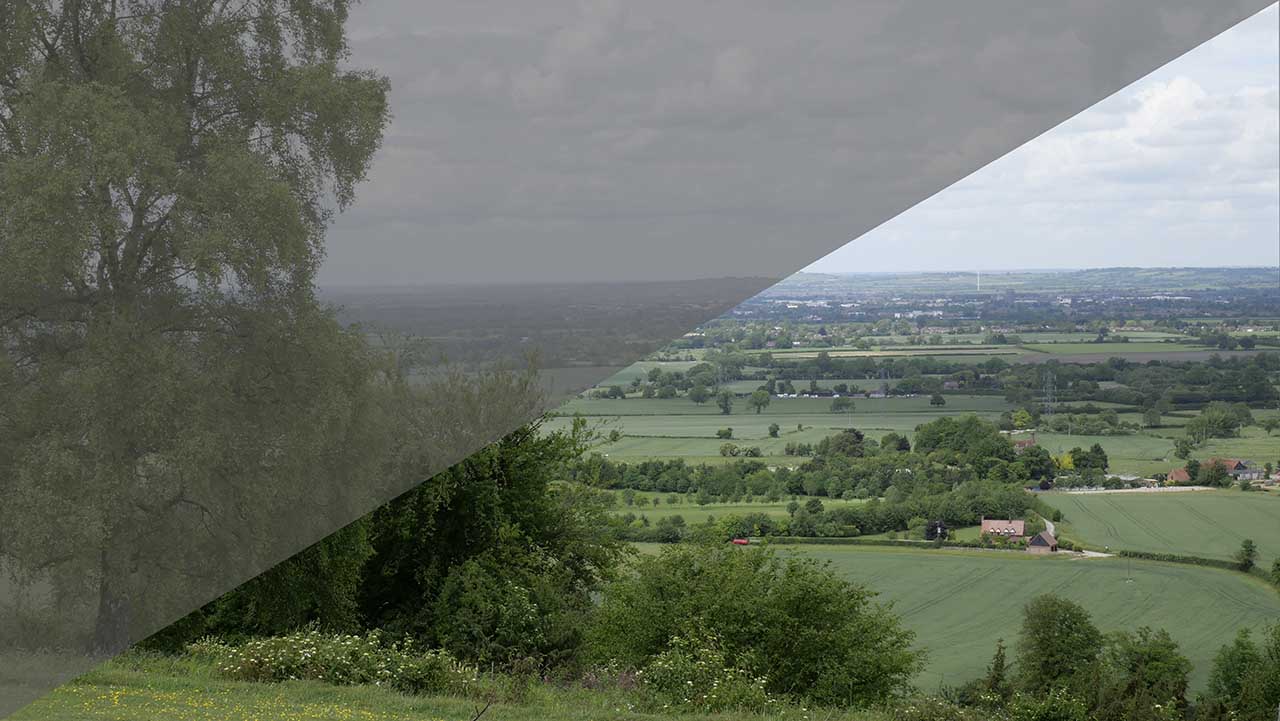
Furthermore, it’s possible to record 4:2:2 8-bit footage to an external recorder connected via an optional micro HDMI cable. Footage that is saved to a memory card in the card slot has 4:2:0 8-bit colour.
Also, the G90 has a 3.5mm microphone port and a 3.5mm headphone ports. They enable high-end audio recording and monitoring.
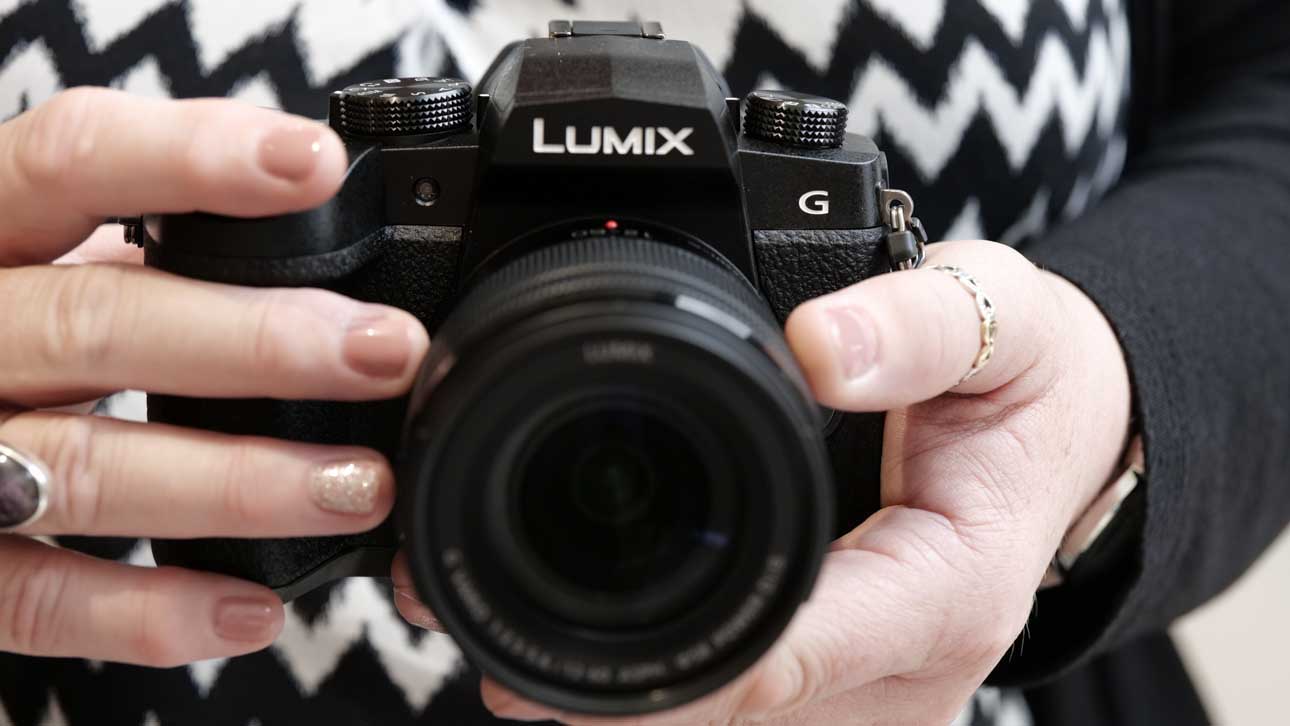
4K Technology
As we’d expect, the G90 has Panasonic’s 4K Photo modes. These enable you to extract key moments as 8Mp images from video shot at 30fps. The 6K Photo mode, which is seen in cameras like the G9 and GH5 and enables 18Mp images to be extracted from video footage, is not present.
There are three 4K Photo modes, 4K Burst Shooting, 4K Burst (Start/Stop) and 4K Pre-burst.
The G90’s Auto Marking function that detects frames with movement or faces makes it easier to find the right frame of video to extract.
There’s also a Sequence Composition mode that enables four images to be combined into one with a moving subject shown in different locations.
Panasonic has also included Post Focus and Focus Stacking in the G90. Post Focus mode allows you to select a still from a 4K sequence in which the focus shifts. Meanwhile, the in-camera Focus Stacking enables up to 999 images to be shot and merged to produce a composite that’s sharp from foreground to background.
Live View Composite Recording
Perhaps *coughs* inspired by Olympus, Panasonic has introduced a new Live View Composite Recording mode in the G90. Like Olympus’s Live Composite mode this allows you to shoot multiple exposures with only the areas that are brighter than in the first shot appearing in the final image. It’s proved a very useful mode in Olympus cameras when you want to shoot fireworks, traffic trails and light painting.
Photo Styles
In addition to the Photo Styles found on the G80 (Standard, Vivid, Natural, Monochrome, L. Monochrome, Scenery, Portrait, Cinelike D and Cinelike V), the G90 has the L.Monochrome D Style that captures more dynamic monochrome images with stronger highlights and shadow.
All of the monochrome modes can also be used with a grain effect.
It’s also possible to edit images in-camera. For example, the Highlight Shadow function allows you to apply one of 3 presets to adjust image contrast. And you can create your own preset to apply, then save it for future use.
In addition, an Easy Retouch feature is available to remove unwanted elements in an image.
Battery Life
In its default settings, the Panasonic Lumix G90 has claimed battery life of 290 shots. That’s nothing to write home about. Well, I guess it might be, but not for the right reasons. However, there’s a power-saving mode that extends the life to around 900 shots.
When this mode is selected, the G90 goes to sleep after the viewfinder’s eye-sensor detects a short period of inactivity. It’s then reawakened by a half-press of the shutter button.
If more power is required, Panasonic’s DMW-BGG1 Battery Grip is compatible with the G90. This adds more controls for vertical shooting and extends the battery life.
Bluetooth LE and Wi-Fi
As is becoming the norm, the G90’s Wi-Fi connectivity is paired with a low energy Bluetooth system. This is designed to make it easier to connect the camera to a smartphone. It also enables a permanent connection between a paired phone and camera that the phone can be used to wake-up a sleeping G90.
Panasonic’s free smartphone app enables the G90 to be controlled remotely by a paired phone, starting and stopping video recording as well as tripping the shutter to shoot stills.
And, as is becoming more common, there’s an Auto Transfer option that can be set to transfer images to the phone automatically.
Key Specifications
- Camera type: CSC/Mirrorless
- Date Announced: 5th April 2019
- Price at launch: £899.99 body only, £1,079.99 with 12-60mm lens, £1,259.99 with a 14-140mm lens
- Sensor size Four Thirds type (17.3 x 13mm)
- Effective pixel count: 20.3 million
- Processor: Venus Engine
- Lens Mount: Micro Four Thirds
- Viewfinder: Electronic with 2,360,000 dots OLED
- Sensitivity range: ISO 200-25,600 (expanded ISO 100-25,600)
- AF system: Contrast detection
- Monitor: Touch-sensitive tilting 3-inch OLED with 1,040,000 dots
- Max shooting rate: 9fps with AF locked on the first frame
- Max video resolution: 4K UHD (3840 x 2160)
- Storage: SD/SDHC/SDXC (UHS-II)
- Dimensions: 130.4 x 93.5 x 77.4mm
- Weight: 484g body only, 536g with SD card and battery
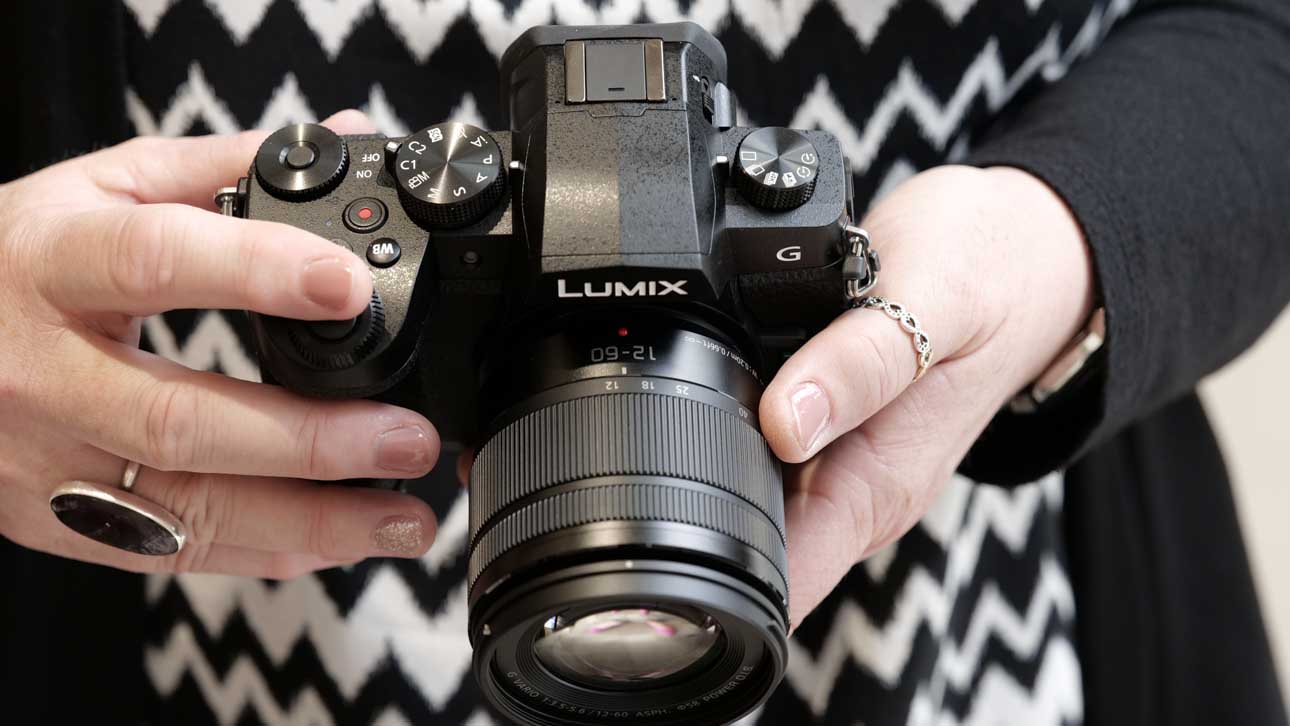
Build and handling
Panasonic has taken its design cues from the G9 for the G90/G95. As a result, the new camera seems a little more serious than its predecessor with faster access to key features. For example, there are three buttons in a line just behind the shutter release on the top plate. These are used to access the exposure compensation, sensitivity (ISO) and white balance controls.
The G90 also has two fairly large control dials on the top plate. One is around the shutter release and the other is towards the back, just above the thumb rest. It means they are very easy to reach so you can quickly adjust settings.
According to Panasonic, the G90’s controls have been positioned with single-handed use in mind and it seems to work well. It’s disappointing that it doesn’t have a mini joystick to set AF point quickly though. The G9 has one, and although it’s not in the best location, it’s very useful.
The redesigned grip is also ergonomically shaped and comfortable to hold. And while the G90 lacks the beefy build of the Lumix S1, it feels solid. That may in part be attributed to its die-cast magnesium alloy front frame.
Like the G80, the G90 is sealed along every joint and control to make it splash and dust resistant.
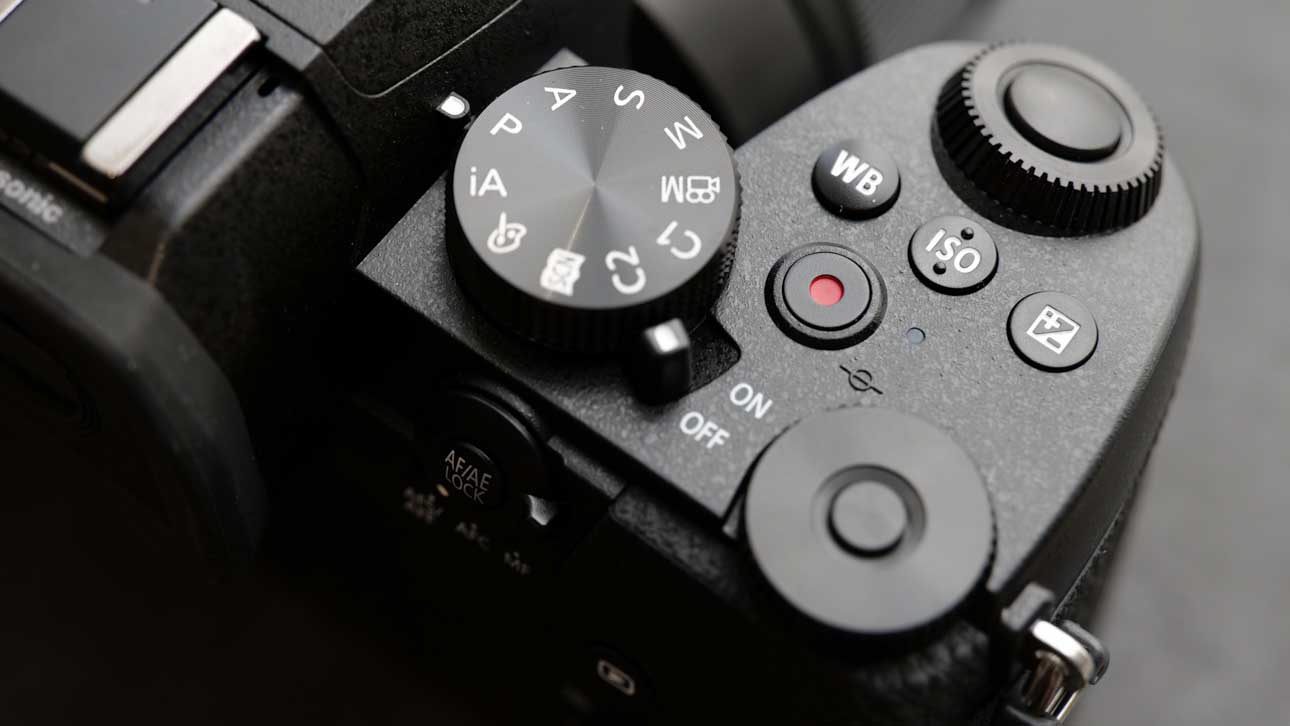
Viewfinder and Screen
The G90’s viewfinder is nice and clear with a good level of detail visible. If you wear spectacles you’ll probably find that you need to shield your eye a bit in bright sunlight. Crucially, the preview in the viewfinder is a good match for the final images.
Similarly, the screen also shows plenty of detail. It doesn’t suffer excessively from reflections in bright light, but I wouldn’t want to be without the viewfinder. It’s very handy to have a vari-angle screen. It means you can see it whether you’re shooting above or below head-height in landscape or portrait orientation. That tends to lead to more creative images.
The screen is also very responsive to touch. And although there’s a full complement of buttons and dials, it’s nice that so much functionality is afforded to it. For instance, you can select settings in the main menu and Quick Menu by tapping on the screen. This is so much faster and more intuitive than using navigation controls.
Menu
As usual with a Panasonic Lumix G-series camera, there’s a Quick menu in addition to the main menu. Helpfully, the Quick menu can be customised to give a fast route to the features you use most often. Unfortunately, Panasonic has opted for its old-style Quick menu which means there can be quite a bit of scrolling to find the option you want. I much prefer to have a grid-style layout with everything on one screen.
Panasonic has also given the G90 / G95 a My Menu Screen. That’s useful because you can group together your favourite features and access them quickly. If you like, you can also set the menu to open on that page.
One thing I would like to see, which isn’t currently possible, is the ability to set a Photo Style for stills photography and another for video. Although Photo Style appears in both the stills and video sections of the menu, you don’t have split control. As a result, if you set the Photo Style to V-Log L in the video menu, it is also set to that in the still menu.
Drive Mode
Like the G80, the G90 has a drive mode dial on the left of the top plate. In addition to the usual modes, this is used to select 4K Photo mode. Although you still have to select the specific mode you want via the menu, it’s a quick option when some action develops.
I generally find 4K Burst (Start/Stop) the most useful, but it might be a good idea to leave the camera in 4K Pre-burst mode as this is designed to capture those moments that develop very quickly. When it’s activated, the camera records 30 images before the shutter release is pressed and 30 after, taking 2 seconds in total.
Controls Compared with the Panasonic G9
The control layout on the back of the Panasonic G90/G95 is very similar to the G’s. To the left of the thumb rest, for example, there’s a switch to select the focus mode. This surrounds an AF/AE Lock – yay!
Lower down on the right of the cameras, both have four buttons, the navigation pad and a wheel dial around the pad. On the G90, the buttons access the main menu, Quick menu, playback and display options. And as usual, the menu button doubles up as the Set button while the Quick menu button is customisable and also marked Fn2.
On the G9, the playback button is on the left side. The fourth button is a customizable Fn1 button that by default accesses the AF point selection modes.
The main difference with the layout on the right side of the back of the cameras is the lack of the joystick on the G90. This is poorly positioned on the G9, but it’s still nice to have it. Thankfully, Panasonic rectified the positioning for the full-frame Lumix S1 and S1R.
The G9 has two buttons on its rear left side whereas the G90 has just one. That’s marked Fn3 and LV. By default, you can use it to turn the viewfinder on and off, but it’s also customisable.
Panasonic hasn’t given the G90/G95 a top-plate LCD like the G9’s. That means despite its smaller size, the G90 has room for two separate dials on the top.
So rather than the stacked dials of the G9, the G90 has an exposure mode dial on its right and a drive mode dial on its left. That makes it very easy to switch between the various options.
Performance
There’s nothing to beat coming home from a great day out, browsing through your images and finding you’ve got a nice selection. The Panasonic Lumix G90 / G95, doesn’t disappoint, it’s capable of producing very nice images.
Thanks to the electronic viewfinder, you get a good idea of the exposure before you take a shot. I found the Lumix G90 / G95 a little prone to overexposure. As a result, I often reduced the exposure suggested by the Multiple metering mode by 1/3Ev. In most cases, this was to saturate the colours a bit more.
On the colour front, I found myself switching between the Standard, Natural and Scenery Photo Styles. On the whole, I prefer the results with the Natural setting, but shooting raw files is a safer bet as you have more colour data to play with while post-capture processing.
The auto white balance setting also delivers good results in a wide range of situations. The Sunny setting can deliver attractive results, but I find using it and the Standard Photo Style makes some vegetation looks a bit too blue.
There’s good news with the Live View Composite mode. As well as being easy to use, it delivers excellent results and can output both raw and Jpeg files. It makes shooting subjects such as fireworks, traffic trails or light painting very easy.
Image Quality
The G90 captures a good level of detail at ISO 200. It’s what I’d expect from a high-quality 20Mp Four-Third type sensor. A faint whiff go granular noise becomes apparent in raw files shot at ISO 800 and viewed at 100%, but it’s really nothing to be worried about. In fact, noise is controlled well up to ISO 3200 or 6400.
However, I’d avoid using ISO 12,800 if possible and I’d never use ISO 25,600 unless I really had to. If you need to use ISO 12,800, it’s well worth shooting raw files as you’ll get a better result by processing them yourself than you get from a Jpeg straight from the camera.
Raw files shot at ISO 12,800 have obvious speckling in the shadows while the Jpegs look just a little too smooth. As a result, the Jpeg images look overtly digital and rather unnatural.
As you’d expect, pushing up to ISO 25,600 makes things worse. The Jpegs have a slightly watercolour-like appearance while the raw files have lots of noise. This can be tamed somewhat by careful adjustment of the noise reduction slider in post-capture processing, but there’s still some loss of detail.
Autofocus
In most situations, the G90 / G95 focuses quickly and accurately. It also proved very capable with moving subjects, even managing to keep my dog in focus as he raced towards me.
The Tracking AF system coped reasonably well, but I find I get the best results when I use Custom Multi AF mode. This allows you to select an area, or a group of AF points for focusing. With my dog, I found a group of 5 points worked well. Increasing the size of the area beyond that resulted in the focus shifting to the wrong part of the scene fairly often.
The cross-shaped area of 5 points is also just big enough for me to stand chance of keeping it over him as he moves.
I found the same set-up worked very well when photographing cyclists in the Ovo Energy Women’s Tour. The camera latched on to the lead cyclist with ease and followed her as she pedalled towards me. After a 16-second gap, the chasing pack arrived and again the camera got the leader sharp. When she got too close, the camera took a brief moment to latch onto someone else under the active AF area, but then it followed them successfully.
Dynamic Range
Cameras with Four Thirds type sensors aren’t renown for their dynamic range. However, while the Lumix G90 / G95 can’t compete with a high-end full-frame like the Nikon Z7, its files have reasonably good latitude.
This means that if you’re faced with very bright highlights you can underexpose a bit and then brighten the shadows without too much trouble. I found that low sensitivity raw images can be subjected to around 3 to 3.5Ev brightening without noise become problematic. The shadows also have a decent amount of colour information so they still look natural after brightening.
Sample Images
Follow the link to browse and download full-resolution images
Sample Video
The video below was shot with the Panasonic Lumix G90 / G95 in 4K 100M 30p with the white balance set to Sunny and the Standard Photo Style. Some sections (silent) are at 50% speed – just because. The camera was hand-held, the stabilisation was on and the audio was recorded using the onboard mic.
Check the price of the Panasonic Lumix G90 at Wex Photo Video, Park Cameras and Amazon UK
Check the price of the Panasonic Lumix G95 at BH Photo Video, Adorama and Amazon US
Verdict
Panasonic has hit the mark well with the Lumix G90. It has an attractive collection of features for both stills photographers and videographers. The vari-angle screen, 4K recording, audio ports and V-Log L are especially enticing for videographers and vloggers.
As I mentioned earlier, the new control arrangement seems a bit more serious than the G80’s. It makes the G90 seem more of a prime enthusiast-level camera with dedicated controls to access most of the key features. Perhaps more importantly, it mimics the control arrangement of the G9, making stepping between the two cameras a bit easier. It’s just a shame that there’s no joystick for setting the AF point, I really missed it.
The camera also has a sturdy build and is weather-sealed. This will appeal to enthusiasts who want a camera they can use in all manner of conditions.
It’s interesting to see Live Composite mode appearing on a non-Olympus camera. I’ve wondered for a while why no the manufacturer has developed something similar. It makes some of the trickier shots far easier. It’s surprising that Panasonic hasn’t also developed its own version of Olympus’s Live Time mode to simplify standard long exposure shooting.
All things considered, the Lumix G90 / G95 is an attractive proposition.


